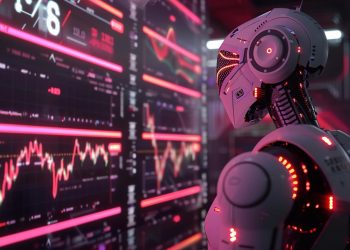1. The Quiet Revolution Underway
Global finance rarely changes all at once—it evolves through subtle shifts in how information is processed. For years, analysts and traders relied on classical systems to interpret patterns buried in immense volumes of data. These systems worked well enough until markets became too fast, too entangled, and too vast for linear computation to keep up. The emergence of quantum artificial intelligence marks a turning point.
The technology doesn’t announce itself with spectacle. It hums in the background, rethinking how calculations occur, how risk is modeled, and how institutions manage volatility. The quantum ai platform is not a single invention but an ecosystem: hardware built for quantum tasks, algorithms capable of self-correction, and machine learning frameworks that adapt to the uncertainty of real markets.
The promise is not effortless wealth or automation—it’s a more honest understanding of complexity itself.
2. How Quantum Systems Reframe Intelligence
Traditional computing depends on bits that exist as 0 or 1. Quantum computing operates differently. A qubit can hold multiple states at once through superposition, and groups of qubits influence one another via entanglement. These properties allow calculations to occur across many possibilities simultaneously.
When this is combined with artificial intelligence, the result is not a faster version of existing software—it’s a new form of reasoning. Algorithms can map interdependencies in data that classical systems flatten or ignore. In financial modeling, where thousands of variables intersect, this means greater depth and a more realistic portrayal of uncertainty.
For developers, the challenge lies in translating theory into reliable infrastructure. Quantum noise, hardware instability, and the cost of scaling all complicate progress. Yet each breakthrough brings the system closer to operational maturity.
3. The Trading Frontier
On trading desks, the impact of the quantum ai platform is beginning to take shape. Quantum-enhanced models analyze multiple asset classes—equities, currencies, commodities—simultaneously, identifying subtle correlations and stress points that conventional systems miss.
Institutions use these insights to rebalance portfolios in real time and refine risk exposure. The benefit isn’t in predicting tomorrow’s price movement with supernatural accuracy; it’s in reducing the uncertainty that surrounds every decision. By mapping probabilities across a broader landscape, traders gain the ability to act with clearer context and less hesitation.
For smaller market participants, cloud-based access is beginning to level the field. Tools powered by quantum algorithms are filtering into retail platforms, giving independent traders glimpses of analysis once reserved for major banks.
This transformation unfolds quietly—an evolution rather than a disruption—but its long-term effect on market efficiency is undeniable.
4. Beyond Finance: Broader Industrial Shifts
Quantum AI’s value doesn’t stop at trading or portfolio management. Industries built on logistics, healthcare, and cybersecurity are adapting the same systems to their own data challenges. In logistics, quantum models optimize complex routing problems that stump classical solvers. In healthcare, they accelerate molecular analysis, revealing chemical relationships that shorten research cycles. In cybersecurity, they detect anomalies across sprawling networks before they escalate into breaches.
Each field draws on the same underlying capacity: the ability to explore countless scenarios in parallel and adapt algorithms as new data arrives. This is the essence of intelligence—not prediction, but responsiveness.
5. The Next Decade of Quantum Integration
The next decade will see quantum AI shift from research topic to infrastructure layer. Businesses won’t announce its adoption; they’ll simply notice systems performing better, adapting faster, and making decisions that seem uncannily well-timed. The shift will be invisible to most users, visible only in improved outcomes and leaner inefficiencies.
Yet beneath that surface, the philosophical change is significant. Quantum AI acknowledges that uncertainty isn’t noise—it’s information. By working within that uncertainty, businesses and traders align more closely with reality rather than fight it. That subtle but fundamental shift defines the next era of intelligent computation.
FAQ: The Quantum AI Platform
Q: What exactly is the Quantum AI platform?
A: It’s a hybrid framework combining quantum computing hardware with AI algorithms to process complex, interdependent data more efficiently than classical systems.
Q: How is it used in trading?
A: The platform analyzes multiple markets simultaneously, helping traders identify correlations and manage risk in real time.
Q: Does it replace traditional computing?
A: No. It works alongside classical systems, handling the parts of analysis that benefit from quantum parallelism.
Q: Is this technology already in use?
A: Yes. Early deployments exist in finance, logistics, and cybersecurity, with broader access coming through cloud-based services.
Q: What makes it transformative for global finance?
A: It introduces tools that mirror the true complexity of markets, allowing decisions based on depth rather than simplification.















